
When scanning the headlines these days, it’s easy to get the impression that
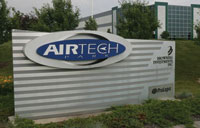 Hendricks
Hendricks“We continue to strengthen talent development efforts through our ‘Hidden Benefits Program’ with the Hendricks College Network and MIBOR (Metropolitan of Indianapolis Board of Realtors),” says Kelley. “We’re also fortunate to have the collaborative Hendricks College Network to help businesses and residents achieve their workforce development and continuing education goals.”
Growth is strong in
Hendricks offers exceptional transportation, including rail, air and interstates, and ongoing infrastructure improvements. The County recently implemented new water, sewer and roadway infrastructure at the I-70 and Hwy 39 exit, and 70 West Commerce Park (which has 1,000 acres of build-to-suit opportunities under development).
Learn more at www.hcedp.org.
 Mayor Jerramiah T. Healy credits the Jersey City Economic Development Corporation and Jersey City Urban Enterprise Zone (UEZ) program with continuing to fuel the area’s economy through business-growth incentives, programs and initiatives.
Mayor Jerramiah T. Healy credits the Jersey City Economic Development Corporation and Jersey City Urban Enterprise Zone (UEZ) program with continuing to fuel the area’s economy through business-growth incentives, programs and initiatives.“We know everyone benefits when
Greater outreach efforts are being made to acquaint businesses with the benefits of being located in
With easy
Learn more at www.jcedc.org.
 Location and quality of life set
Location and quality of life set Churchill has especially seen renewable energy growth.
Churchill is also doing its utmost to ensure the area’s ongoing growth and success.
“Education and awareness are keys to surviving the economic downturn,” says Eric D. Grimes, J.D., executive director, Churchill Economic Development Authority. “We’ve gone door-to-door finding out what our businesses need and educating them on the resources we can offer them. If you don’t ask, you can’t help them.”
In Churchill, qualified businesses can take advantage of the
Learn more at www.ceda-nv.org.
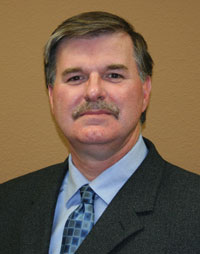 On Forbes’ 2008 list of Best Small Places for Business and Careers, Lawton combines low business costs with low cost of living, creating a draw for both companies and a highly skilled workforce.
On Forbes’ 2008 list of Best Small Places for Business and Careers, Lawton combines low business costs with low cost of living, creating a draw for both companies and a highly skilled workforce.Growth is coming quickly to the Lawton/Fort Sill area thanks to Base Realignment and Closure (BRAC) at nearby Fort Sill Army installation, which will means a $4.4 billion economic impact for Lawton/Fort Sill.
All that growth demands a rich workforce, and
Learn more at www.lawtonfortsillchamber.com.
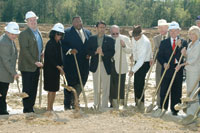 The secret is out about
The secret is out about “We’re making sure that national or international news don’t overshadow the health and opportunity in our region and state,” says Kurt Foreman, president, Northwest Louisiana Economic Development Foundation. “We’ve redoubled our efforts to build support networks of organizations engaged in economic development and to stay focused on making the most of our strong prospect pipeline.”
The Haynesville Shale natural gas field has cushioned the region from current economic uncertainties, but film, entertainment and digital media have also been powerful engines in recent years. Growth continues with manufacturing projects, distribution and customer support/call centers, healthcare and life science opportunities and the potential growth of key missions at the region’s largest employer, Barkdale Air Force Base.
Nine different higher education institutions work together to enhance the 10-parish-region’s workforce, research capability and overall competitiveness. Additionally, the area’s uncongested multimodal transportation network, long-standing competitive cost structure and quality of life make the extra difference at the end of the day.
Once one of
Learn more at visit www.nledf.org.
 In
In “Maumelle has a friendly environment,” says Judy Keller, Community and Economic Development, City of
New and existing Maumelle businesses take advantage of several incentives offered by the Arkansas Economic Development Commission (AEDC), all of which are supported by the city through resolutions and grant fund administration, as well as fee reduction or waiving when applicable.
It’s a strategy that works, evident in the city’s recent successes: expansions and development from companies like Kimberly-Clark, BEI Precision Systems & Space Company, Inc. and Cintas.
Maumelle is building on that success, literally. Currently, the city, partnering with the AEDC, is widening major roads in its largest industrial park.
Learn more at www.maumelle.dina.org.
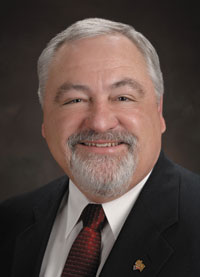 Not surprisingly, business is bigger and better in
Not surprisingly, business is bigger and better in “Our low cost of doing business, skilled workforce and strategic location have brought in a considerable amount of business,” says Gary Vest, director of economic development, Odessa Chamber of Commerce. “Right now, we’re concentrating on business retention and expansion, with an emphasis on industry diversification.”
In addition to a range of benefits offered by the state of
For businesses that want to take advantage of those benefits, site options abound, including the 100-acre
Learn more at www.odessachamber.com.
 The only thing slow in
The only thing slow in “We believe that now is the time to focus more effort in marketing and industrial recruitment,” says Brad Lofton, executive director, Valdosta-Lowndes County Industrial Authority. “We are also paying very close attention to the needs of our existing industries, providing every resource we can to help them thrive during the downturn.”
Businesses are responding to
One of
With special focus on defense manufacturing, general high tech manufacturing, biotechnology, automotive and aviation,
Learn more at www.industrialauthority.com.
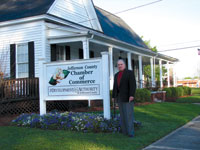 Don’t be fooled by
Don’t be fooled by Just take a look at
It’s that leadership and planning, along with the area’s low taxes and abundant land and water resources, which have drawn businesses to
The Development Authority packages customized, competitive incentive deals built on three components: employees, capital investment in the community and benefit to the community. Additionally, Jefferson County is
Learn more at www.jcda.net.
 Job growth and strong prospects are the defining characteristics of the current economy in
Job growth and strong prospects are the defining characteristics of the current economy in “The
The manufacturing and digital media industries are both strong thanks to unique local incentive programs.
There are a number of other reasons businesses choose
With a strong labor force and virtually every kind of training and research at the area’s six colleges and universities, including
Learn more at www.brac.org.
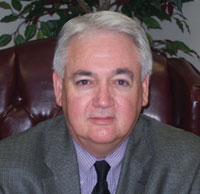 Southern Carolina
Southern Carolina“Our ability to meet workforce needs is the number one reason we have landed our last three or four major projects,” says Danny Black, CEO, SouthernCarolina Alliance. “Through our Certified Business Ready® program, we can provide skilled employees who meet the profile of each position needed in the facility.”
As part of the Certified Business Ready program, the
Southern Carolina prepares the 200,000-plus workforce to meet local industries’ needs through various pilot training programs and apprenticeships. The South Carolina Technical College system serves the area with facilities throughout the region, and last year the Alliance implemented a regional WorkKeys® testing and certification program, using the nationally recognized WorkKeys program to ensure that the Southern Carolina workforce is Certified Business Ready.
The four-county region offers a multi-county incentive and has strategically developed industrial parks with rail throughout. Among those parks are 10 South Carolina Department of Commerce Certified parks, which include extensive investigation and preparation, making them truly shovel-ready.
Learn more at www.SouthernCarolina.org.
Metro
 Metropolitan
Metropolitan “We work with companies to support them over the entire region, and what I hear more than anything is that companies like that regional approach to economic development,” says Joey Dean, Metro Little Rock Alliance, Little Rock Regional Chamber of Commerce. “The seamless manner in which we approach our recruitment efforts regionally and statewide has positively impacted our outcome.”
The
The region’s success is not limited to manufacturing, though. Hewlett Packard recently announced 1,200 new jobs in the region. Over the last three years, the region has seen over 10,000 new jobs with almost $1.2 billion in capital investments.
With a 500,000-plus labor pool, the area gains its real edge by combining a variety of excellent, flexible regional and state-offered incentives with its strong emphasis on workforce development, including 20 institutes of higher education with more than 60,000 enrolled students.
Learn more at www.metrolittlerockalliance.com.
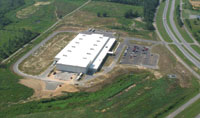 Strategically located between
Strategically located between While Cullman is a popular new industry location, the city is highly successful at expanding existing industries, too.
“That success is a direct reflection on the availability and quality of the workforce, our competitive incentive program, available industrial sites and buildings, and supportive local government leadership,” says Peggy Smith, director, Cullman Economic Development Agency. “Industry stays and expands where they are profitable and supported by the community.”
One of
Those factors, coupled with a strong infrastructure, including low-cost Tennessee Valley Authority electricity, and excess capacity on water, sewer, natural gas and telecommunications, create Cullman’s strong potential for continued growth.
Learn more at www.cullmaneda.org.
Winter Garden,
 With an ideal Central Florida location, minutes away from
With an ideal Central Florida location, minutes away from “Our tag-line really says it all,” says Dolores Key, economic development director, Winter Garden. “Winter Garden, a charming little city with a juicy past.”
All of these benefits make Winter Garden a truly ideal location for businesses large and small, businesses like Superior Access Services that appreciate the positive impact provided by an outstanding community.
A U.S. Woman Owned Small Business, Superior Access Services (SA Services) provides a vendor-independent approach to evaluating, designing and developing solutions to protect the customer in critical security procurement decisions. The U.S. Army selected SA Services to deliver a Mobile Check Point platform, which allows troops to inspect vehicles and interrogate occupants while removing our military personnel from harm’s way.
“When selecting a location to headquarter our company we found Winter Garden to be the most convenient for our requirements,” says Al Fyffe, president SA Services. “Winter Garden’s location allows easy access to the area and our facility, as a family owned and operated business, found the support, atmosphere and location far exceeded our expectations.”
Learn more at www.cwgdn.com/pages/econ_dev/index.htm.
 Well-positioned amid a major transportation corridor and within 500 miles of 76 major metropolitan areas, Rankin County offers multi-modal transportation, including road, rail, air and water, that provides easy access to cities worldwide, putting both foreign and domestic markets at its doorstep. Ideally suited for logistics and distribution, the area is less than a day’s drive to all of the South’s major auto manufacturing facilities.
Well-positioned amid a major transportation corridor and within 500 miles of 76 major metropolitan areas, Rankin County offers multi-modal transportation, including road, rail, air and water, that provides easy access to cities worldwide, putting both foreign and domestic markets at its doorstep. Ideally suited for logistics and distribution, the area is less than a day’s drive to all of the South’s major auto manufacturing facilities.This Southern hotspot has maintained its strong economic position, producing 47 significant projects that created 418 jobs last year. Major commercial and retail projects have continued to open their doors in
But don’t take it from Rankin. A leading
“We never put all our eggs in one basket,” says Troxler. “We draw from every aspect of our community’s resources and market our individual and collective strengths. We offer a total site location package fully supported by pro-business community leaders and elected officials. We’re committed to retaining and expanding
Learn more at www.rankinfirst.com.
 The Greater Clinton Region is made up of several towns in eastern
The Greater Clinton Region is made up of several towns in eastern “No place is completely immune to the global economic downturn, but several industries in the region continue to thrive, including packaging materials, plastic and plastic products, corn processing, and even tourism,” says Steven G. Ames, president and CEO, Clinton Regional Development. “Proactive government and community leadership are among the greatest assets of the region.”
Representatives of local government, business and industry, commerce and economic development, healthcare and education join forces annually to launch projects and initiatives that spur economic growth and quality of life. These face-to-face visits with legislators have garnered funding for several infrastructure projects – a facelift for U.S. Hwy. 30 on both sides of the
Community spirit, partnerships, pride and hard work are “what’s working” in the Greater Clinton Region and positioning the area for future growth.
Learn more at www.clintondevelopment.com.
Bannock,
 Idaho
Idaho“Our strong local, regional and statewide partnerships helped recruit six medium-sized companies into the area over the last two years, helped retain two major local companies (ON Semiconductor and Farmers Insurance), and helped local business growth,” says Gynii A. Gilliam, executive director, Bannock Development Corporation. “All in all, the locally expanding businesses, along with some of the newly recruited companies that are already open and hiring, have kept the area’s economy strong.”
Businesses flock to the area for a variety of reasons, including its excellent workforce, competitive operating costs, land availability, expedited site selection process, exceptional access to interstate and rail transportation and customized technical training at a number of nearby colleges and universities. And as the second lowest energy cost state in America,
Attractive to both businesses and residents, Bannock and its surrounding counties provide a low cost of living as well as a beautiful, unspoiled area to raise families and children.
Learn more at www.bannockdevelopment.org.
Port
 Several landmark events have recently catapulted Port San Antonio onto the national and global business stage. In December 2008, New Breed Logistics, a third-party logistics company, signed a seven-year lease for approximately 134,000 square feet of space at the Port. Offering distribution and logistics services to aerospace customers, New Breed Logistics will employ around 50 people.
Several landmark events have recently catapulted Port San Antonio onto the national and global business stage. In December 2008, New Breed Logistics, a third-party logistics company, signed a seven-year lease for approximately 134,000 square feet of space at the Port. Offering distribution and logistics services to aerospace customers, New Breed Logistics will employ around 50 people.In February 2009, Port San Antonio opened its U.S. Customs and Border Protection Federal Inspection Services (FIS) facility, which ensures quick and safe inspection for incoming commodities. And in March 2009, Port San Antonio was awarded federal stimulus funding stemming from the American Recovery and Reinvestment Act. The monies bestowed upon the Port, totaling $14.7 million, will be used to expand and re-configure a roadway that will open up 150 acres and allow for direct access to the on-site airfield.
“While financial uncertainty exists in many places, Port San Antonio has weathered much of the effects of the economic downturn,” says Jorge Canavati, vice president, Business Development, Port San Antonio. “By maintaining low taxes and reasonable regulations, the State of
Learn more at www.portsanantonio.us.
 A central location, accessible transportation, stable business climate and effective workforce have continued to help
A central location, accessible transportation, stable business climate and effective workforce have continued to help Even with the downturn,
In 2008, the Joplin Area Chamber of Commerce made critical business data available to its businesses of all sizes, but particularly the small- and medium-sized firms in the area, with their new Website, www.joplinregionalbizcenter.com. The site provides a variety of resources, including a link to the JJ Hill Business Library, the largest on-line business library in the country. The Joplin Chamber was the first private-sector economic development organization to partner with JJ Hill. Companies can also access demographic information for their location, contact the
Although
Learn more at www.joplincc.com.
 Much to the credit of the Central Louisiana Economic Development Alliance (CLEDA), the economic development arm of the Central Louisiana Chamber of Commerce, economic downturn in
Much to the credit of the Central Louisiana Economic Development Alliance (CLEDA), the economic development arm of the Central Louisiana Chamber of Commerce, economic downturn in “A big part of the ongoing efforts involve local business councils that have fostered greater formal communication between employers and education/training resources at all levels,” says Elton Pody, CLEDA. “Also, local four-year public and private institutes, coupled with vocational and proprietary opportunities, continue to provide structured, flexible and proactive education/training.”
CLEDA maximizes the use of several available incentive programs and persists with continual infrastructure improvements, including four lanes on intersecting highways and expansions at Alexandria Regional Port. Central Louisiana is served by two Class A railroads and
Central Louisiana Companies laud the productivity of the area’s highly-trainable local workforce. This essential asset, combined with the conscious business-satisfaction efforts of the Chamber/CLEDA and several other progressive entities in the area, results in a consistent “can-do” attitude for meeting local employers’ needs.
Learn more at www.choosecenla.com.
“We’re seeing interest from the automotive sector,” says Melanie Suggs, executive director, Dalton-Whitfield Joint Development Authority. “
A new Volkswagen plant in nearby
The community has an aggressive incentive policy that supplements state-funded inducements and a workforce that’s ready and willing. Many workers are trained in production processes, while Dalton State College and an array of regional colleges and universities provide a variety of skill sets. More than 50,000 college students are within a one-hour radius of the city center.
Put simply,
Learn more at www.DaltonGrows.Biz.
 Vernon
Vernon“
Businesses love
Learn more at www.vernon-ct.gov/economic_development.
 One of
One of “Businesses have taken advantage of a number of incentives available here, including State of
With 443,000 available workers in the labor market area,
Learn more at www.ledc.net.
 When the going gets tough,
When the going gets tough, “The best thing we can do during these economic times is to remain in close contact with local businesses,” says Rusty Haygood, economic development director, Oconee Country Economic Development Department. “Through these conversations, we can identify problem areas that businesses are experiencing or anticipating, and we can meet those challenges proactively.”
Oconee enhances its efforts with regional recruitment initiatives executed through
All those resources make
Learn more at www.businessinoconee.com.
Related Agencies
- Hendricks County Economic Development Partnership
- The Jersey City Urban Enterprise Zone
- Las Vegas Global Economic Alliance
- Lawton-Fort Sill Economic Development Corporation
- Northeast Louisiana Economic Alliance
- Maumelle Community & Economic Development
- Odessa Economic Development
- Valdosta-Lowndes Development Authority
- Jefferson County Development Authority, Georgia
- Baton Rouge Chamber of Commerce
- Southern Carolina Alliance
- Metro Little Rock Chamber
- Cullman Economic Development Agency
- Winter Garden Economic Development
- Rankin First Economic Development Foundation
- Clinton Regional Development Corporation
- Bannock Development Corporation
- Port San Antonio
- Joplin Area CHamber of Commerce
- Louisiana Central
- Dalton-Whitfield Joint Development Authority
- Town of Vernon
- Livingston Economic Development Council
- Oconee County Economic Development

